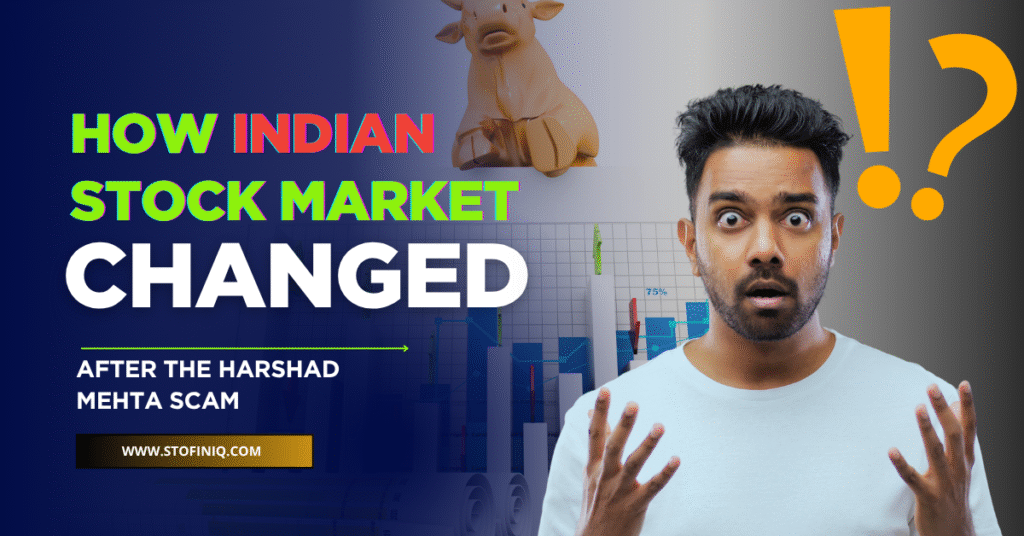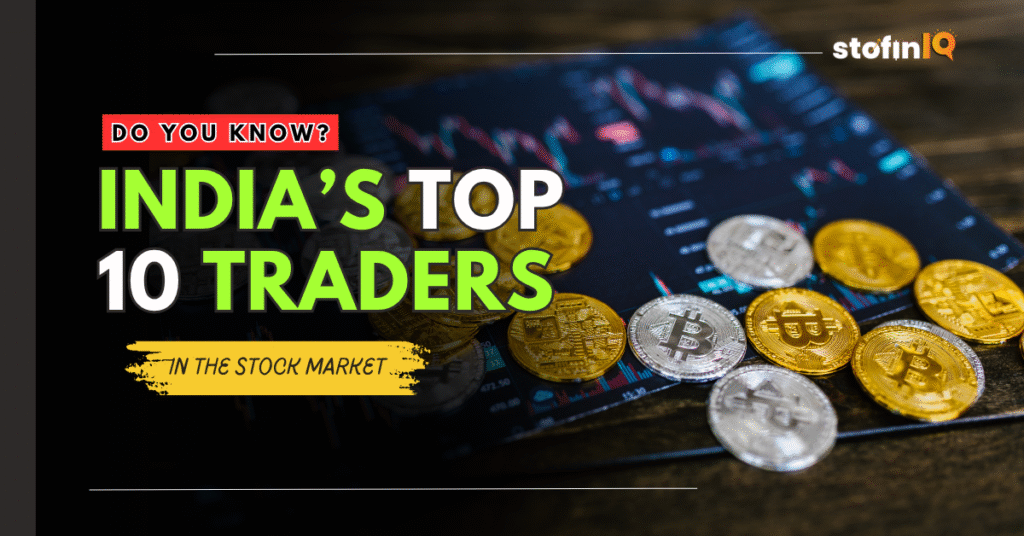
The Harshad Mehta scam is something that entered the limelight for most only after the launch of the hit series Scam 1992. But well before it became a household name, it had already etched a permanent scar on India’s financial tapestry. This scam shook not just investor confidence; it also uncovered the fault lines in India’s banking and regulatory framework. The event totally changed the Indian share market, which had a long-lasting effect on investors, financial institutions, banks, and policymakers.
Several top banks, brokers, and even government institutions suffered. Investor mood plummeted. Share prices collapsed. And the liberalisation momentum that India had only started to generate was suddenly stalled.
But how did the Harshad Mehta scam actually influence the market?
Key Takeaways
- The stock market has not always been digital—before that, in the ’90s, it was paper-based. With that transition, it created an avenue to forge papers and manipulate trades.
- Harshad Mehta scam uncovered major loopholes—He falsified bank receipts and took advantage of loopholes in the system to steal thousands of crores from banks in India.
- It enforced big reforms, From stronger SEBI regulations to electronic and dematting of trading, it completely changed the process of our financial system
- Demat accounts changed the process—shares are stored electronically in demat accounts today with no more faking certificates and paper fraud
- With the emergence of trading tools—They were provided by digital platforms, such as candlestick charts that help traders understand price movement and market trends.
What Did Harshad Mehta Really Do?
So, the share market works in a way that companies sell small pieces of ownership called shares, and people buy them hoping the price will go up so they can make a profit.
Now, Harshad Mehta was a smart stockbroker who understood both the stock market and the banking system very well. Back in the early 1990s, he found a clever (but illegal) way to take money from banks without them realising it. And he didn’t take small amounts—we’re talking about thousands of crores of rupees in the Scam 1992.
(If you’re interested in understanding the share market, not just scams, but how it functions, I’ve written a separate blog that covers all the essential terms and concepts. It’s a great place to start for beginners. Check it out here.)
How did he take money from the banks?
At that time, banks used to lend money to each other for short periods through something called a Ready Forward (RF) deal. It’s like one bank giving a short-term loan to another bank, but instead of cash, they used government securities (kind of like IOUs from the government).
Now, here’s the trick: Harshad Mehta acted like a middleman between two banks. But instead of passing the money between them, he used fake documents called Bank Receipts (BRs) to get the money into his own account. He made it look like the banks were doing a normal deal, but in reality, he took the money for himself.
What did he do with all that money?
He took this money and used it to buy tonnes of shares in big companies. Since he was buying in large amounts, the prices of those shares went up really fast. People saw the market booming and started investing more, thinking it was a golden time. This made Harshad Mehta even richer on paper, and he became a stock market star overnight.
But the truth was – this rise in the market was fake. It wasn’t real growth; it was all based on money he had taken by cheating the system. Once the scam was exposed, everything crashed. The stock market fell, people lost money, and the banks were left with empty hands.
How Did the Harshad Mehta Scam/Scam 1992 Affect the Stock Market?

Harshad Mehta was exposed in April 1992 (that is why it is called the Scam 1992), and its shockwaves were so huge that they spread through the entire Indian stock market and the banking system. The actual amount of the scam was around ₹3,500 crores; this is small compared to the overall market size, but the psychological damage was huge enough to affect a lot of people
This is how it affected the stock market:
1. Market Crash and Investor Panic
Before the Scam 1992, the BSE Sensex (the main stock market index of India) had then climbed from around 1000 to 4500 in just over a year. This is mainly because Harshad Mehta was pushing money into the market from the funds taken from the banks. When the truth came out, the trust had collapsed. The Sensex then dropped from 4500 to 2500 within a few weeks, which is nearly a 40 per cent drop. Over ₹1,00,000 of investor wealth vanished in a matter of days. Many middle-class investors who followed Harshad Mehta fell into the trap of the Harshad Mehta scam, and they were shattered.
2. Tainted Shares and Frozen Trades
All the shares that had passed through these brokers, even if they were legally owned by innocent people, were labelled as “tainted”. These tainted shares could not be traded, and this created chaos among the people. Soon nobody knew which shares were safe, and suddenly the stock market almost came to a standstill.
3. Closure of Stock Exchanges
The panic and uncertainty of the Scam 1992 caused the stock market to shut down immediately for some time. The trading activity dropped sharply, and brokers who were not even at fault faced major losses. It was one of the rare moments in Indian history when the entire financial system paused.
4. Loss of Trust in the System
Indians have been sceptical about the share market, and after seeing the chaotic shift, people lost their trust in the stock market. Scam 1992 mangled the image of the market, and it shifted from a trusted to a risky spot; people thought of the market as a hub of powerful people who manipulated the market and looted the public. This loss of trust affected the growth of India’s retail investor base for years.
5. Policy and Reform Setbacks
India had just begun its economic liberalisation in 1991. But after the Scam 1992, the government slowed down key reforms. The launch of private mutual funds was delayed, foreign investments were put on hold, and banking reforms were shelved. It was like slamming the brakes just as the country had started moving forward.
Let’s look at How the Indian stock market changed after the Harshad Mehta scam.
How the Indian Stock Market Changed After the Harshad Mehta Scam

The Harshad Mehta scam didn’t just expose loopholes—it became the reason India had to rethink and rebuild its entire stock market system. After the scam, major changes were introduced to make sure such a fraud could never happen again. Here’s how the Indian stock market changed:
1. Birth of a Strong SEBI
The SEBI did exist before the scam, but it was powerless. After the scandal, SEBI got the true authority to regulate and watch over the stock markets. It started setting strict rules for brokers, companies, and exchanges to protect the small investors.
2. End of Paper-Based Trading
During the time of the scam, trading used to happen using physical paper only, share certificates, checks, and fake bank receipts. Forging documents was easy. After the scam, India moved toward electronic trading and dematerialization (demat: click here to open your demat account), electronic trading, and dematerialisation. Today, when you buy shares, they go directly into your demat account without any paper or fake certificates.
3. Stricter Rules for Banks and Brokers
Soon, the books were told to never give money without any proper security. There were loopholes in the Ready Forward (RF) deals and fake Bank Receipts (BRs) these loopholes were soon closed. From then on the brokers had to register with SEBI, maintain records, and follow the code of conduct. Unauthorised middlemen were kicked out.
4. Formation of NSE
The NSE that runs today is also one of the positive outcomes of the scam in 1992. The NSE came out as a more transparent and tech-driven exchange, the NSE was formed in 1994. The NSE brought screen-based trading (instead of shouting and hand signals) and this allowed everyone from across the country to trade with fair access.
5. Better Surveillance and Audit Systems
The formation of Stock exchanges like the BSE and NSE were told to monitor usual trading activity. The advanced systems were put in place, this system would detect any sudden spikes or manipulation. The regular audits then became mandatory and company results had to be made public on time.
6. Investor Protection Became a Priority
They had made it clear that the retail investors are in need of more protection. Investors education, grievance redressal forums and compensation funds were created. The SEBI also introduced rules that are required to disclose risks and business details openly before raising money.
One of the most useful tools in this system is the candlestick pattern If you’re new to this, I’ve written a simple guide to help you understand candlesticks. Check it out here.
Congratulations on making it to the end of this blog, I hope you have gotten the insights from the Scam 1992 and and have learnt something new. To learn more about the stock market, trading, mutual funds and overall finance do not forget to follow our blog StofinIQ.
I left my engineering job to follow my true passion writing and research. A passionate explorer of words and knowledge, I find joy in diving deep into topics and turning rich, insightful research into compelling, impactful content. Whether it’s storytelling, technical writing, or brand narratives, I believe that the right words can make a real difference.

